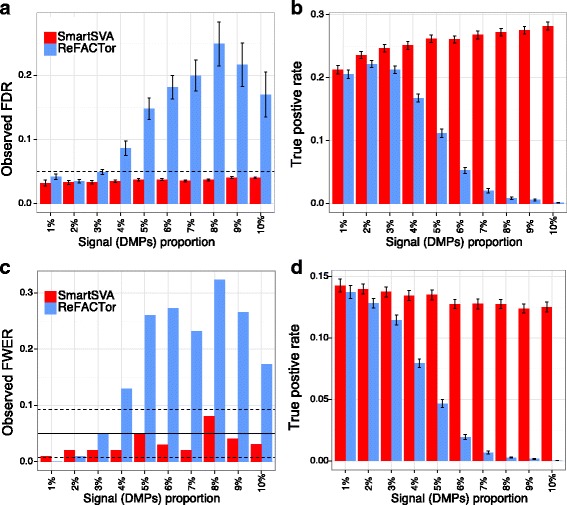Fig. 3.

The power of ReFACTor decreases with increasing signal densities. Moderate cell mixture confounding was simulated in this example. Performance was evaluated by (a-b) the observed false discovery rate (FDR) and true positive rate after FDR control (5% level, dashed line) and (c-d) the observed family-wise error rate (FWER) and true positive rate after Bonferroni correction (5% level, solid line; 95% CI, dashed lines). The number of components for ReFACTor was estimated based on RMT. As we increase the signal proportion, the power of ReFACTor decreases significantly, together with reduced ability to control for false positives. In contrast, SmartSVA is very robust and retains the power irrespective of the signal proportions
